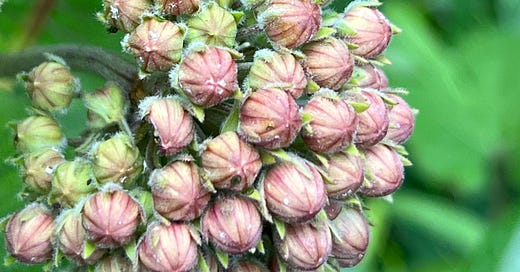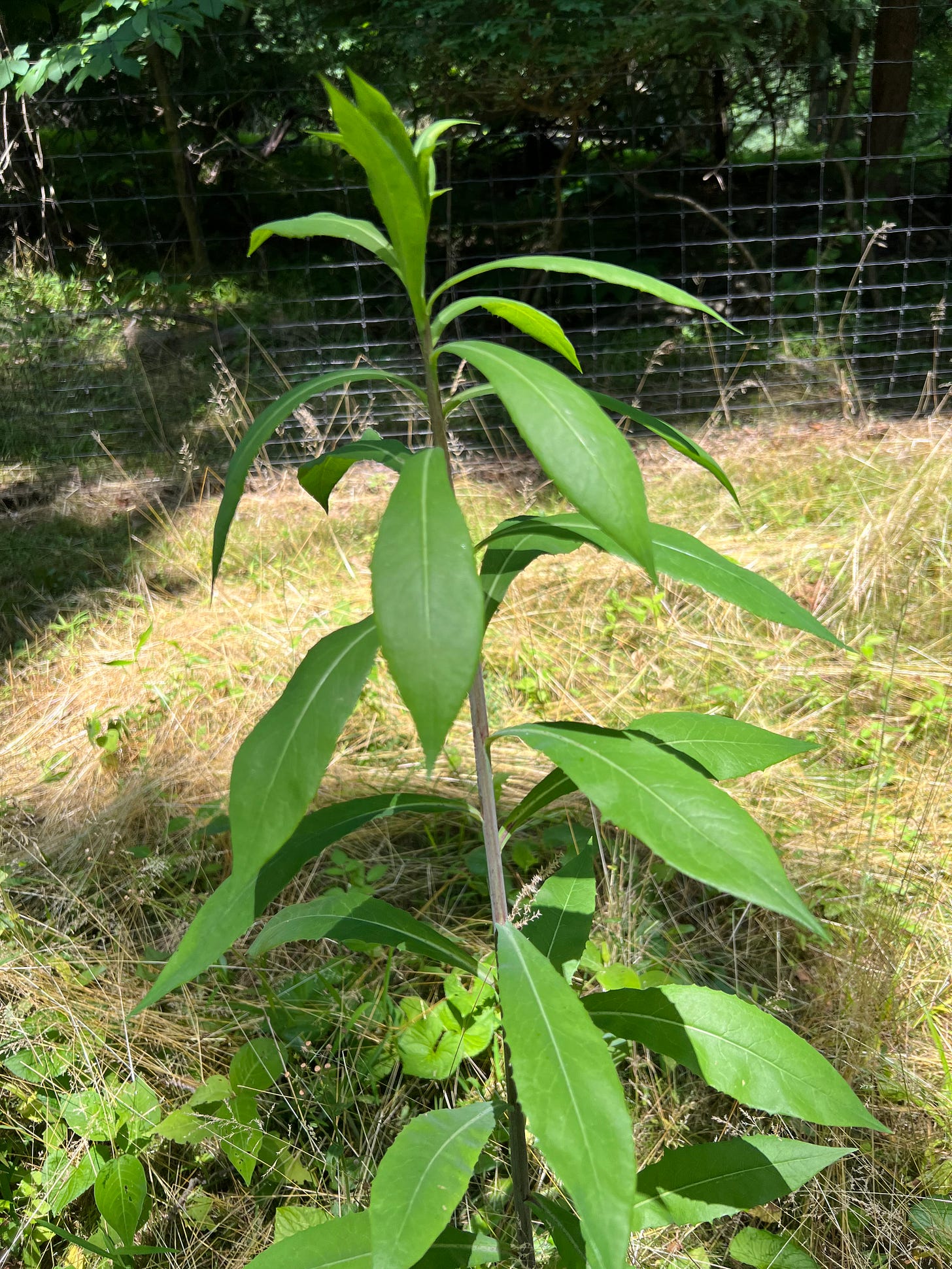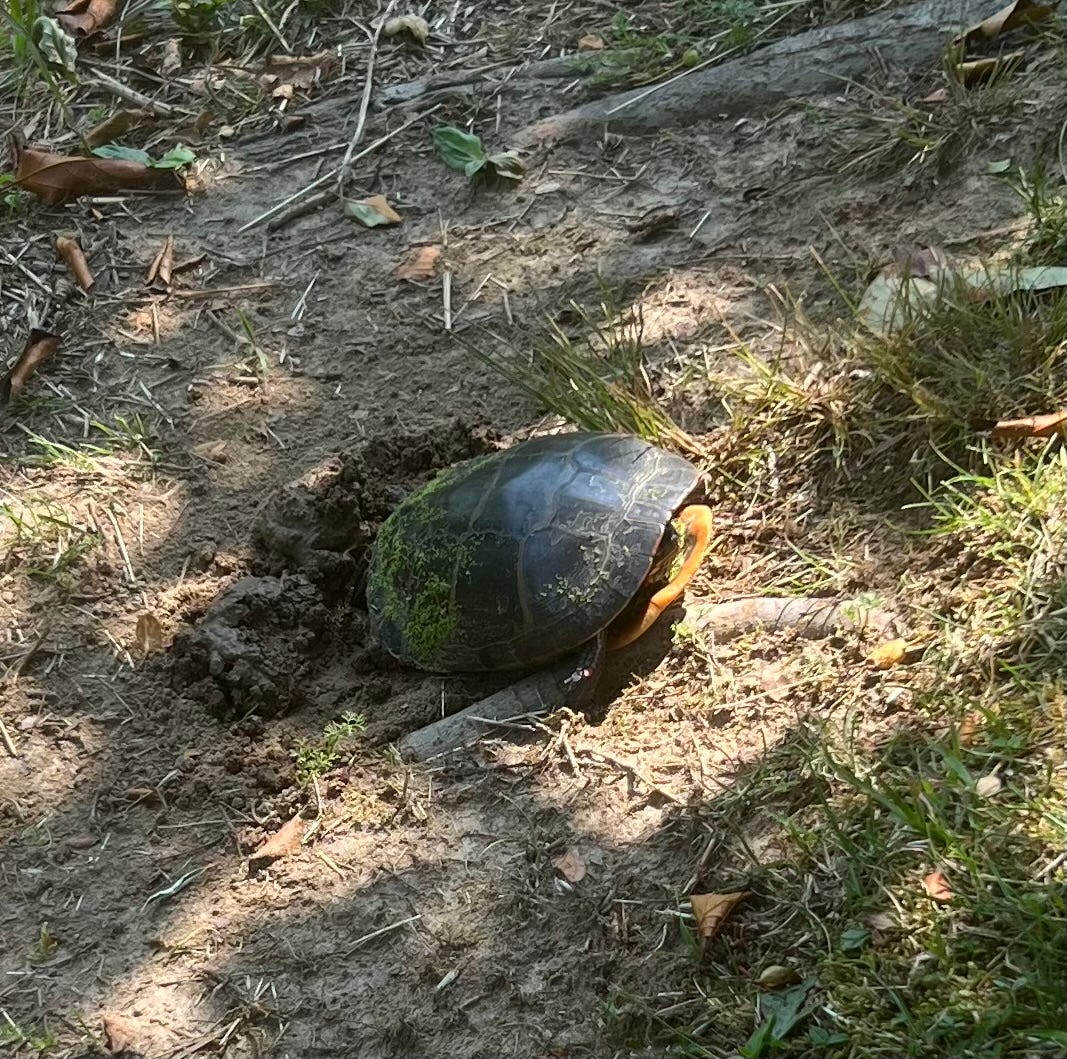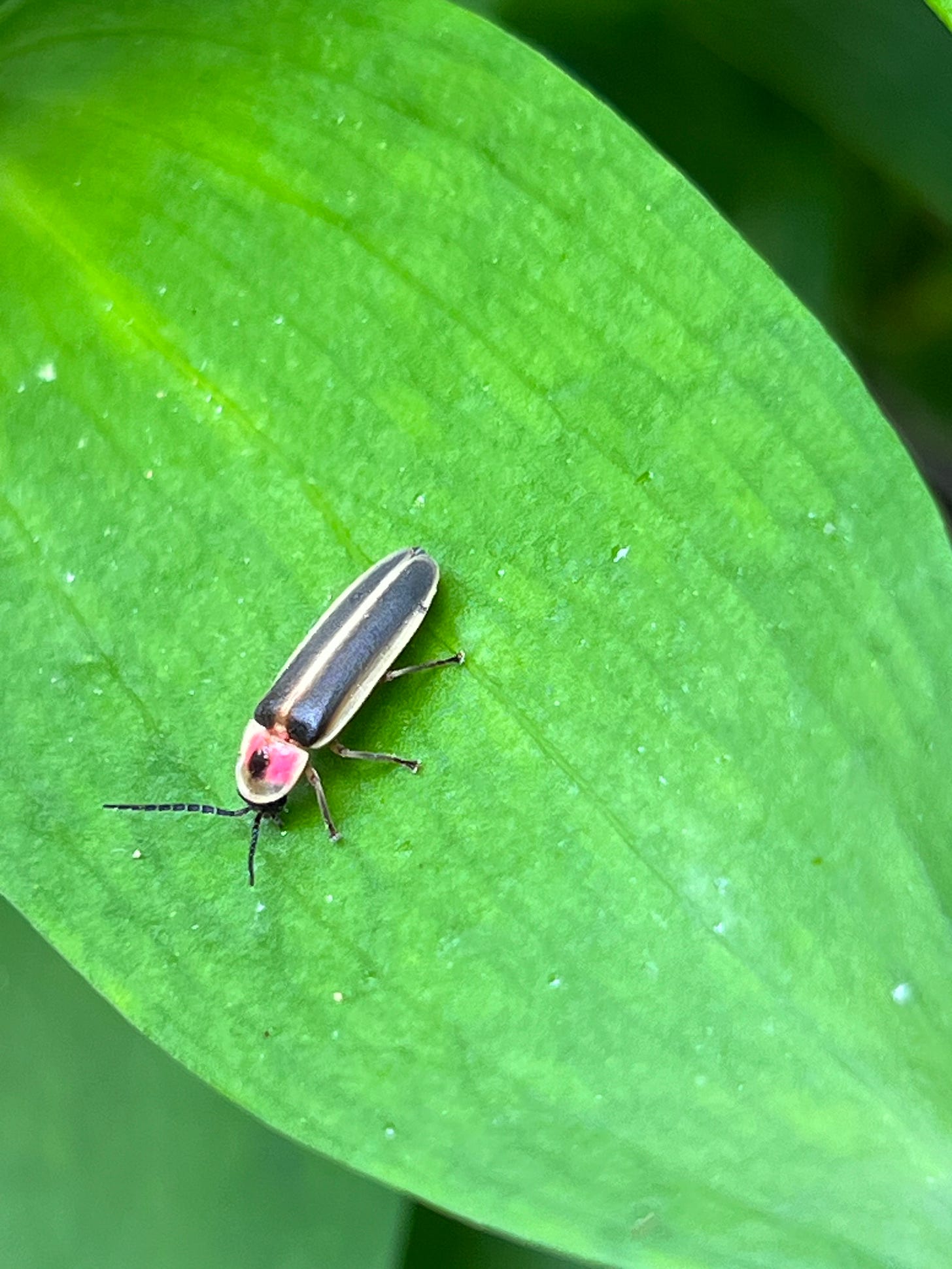A Winning Invention
Puddock Hill Journal #40: The string trimmer is my No. 1 tool for managing invasives—and keeping natives.
In 1971, I was nine years old. With the exception of one or two miserable stays at summer camp in the Catskills, my first-hand exposure to nature consisted almost entirely of riding a banana-seat bike down to Doxy Pond with my best friend, Michael, and poking around on its shores. The pond was a small remnant of the vast wetland that had been eliminated ten years earlier to build our neighborhood.
We were oblivious to the consequences of that desecration back then. Oblivious to the insignificance of the wildlife we witnessed at Doxy Pond in relation to all that had been destroyed so our parents could achieve the suburban dream.
Meanwhile, half a nation away, a major gardening innovation blossomed in the mind of a man named George Ballas. This innovation was also unknown to us—and to most Americans. But it would soon become ubiquitous in suburbia and beyond.
That year in Houston, Ballas, an army veteran, invented the Weed Eater—the world’s first string trimmer. The rotating cleaning brushes of a drive-through carwash are said to have inspired him. How he tied that image to felling weeds, however, Wikipedia does not record. In any case, he went home and hooked a tin can and some fishing line to an edge trimmer. Voila! When he couldn’t find a company to back him, he decided to manufacture the product himself, and in half a decade he’d become a millionaire. In 1977, sales reached $80 million and Ballas sold the company. He would pass into history (he died in 2011), but his son Mark, nicknamed Corky, went on to achieve minor fame as a competitive ballroom dancer. The Weed Eater, of course, will always be better known.
I cannot imagine being a backyard steward without the assistance of a Weed Eater—or string trimmer, to use the generic term. We recently lost our part-time landscape helper, Larry, and while we have turned to an excellent weekly service for assistance, the change has inspired me to get more active with my own weed whacking.
As a consequence, I have been reminded not only of the usefulness of this tool (mine is an electric one from Ego) but of certain guidelines that help one best manage its use—in our own hands or in the hands of others.
Mowers are our most indiscriminate tools, taking down everything in their path. The string trimmer, by contrast, allows us to be selective. With a little practice, one can terminate an invasive plant within inches of a native while sparing the native.
I can’t emphasize enough the importance of this feat. What makes invasives so noxious is their ability to outgrow our native plants by competing for resources (crowding them out) and eventually overwhelming the native seed bank. By deploying the string trimmer to knock back invasives before they seed, we negate both of these advantages, and without the use of chemicals.
My string trimming precepts are as follows:
Learn to identify invasive plants. Know thy enemy by sight. At Puddock Hill, our most harmful invasives are porcelain berry vine (Ampelopsis brevipedunculata), Asian bittersweet (Celastrus orbiculatus), mile-a-minute weed or Asiatic tearthumb (Persicaria perfoliata), common reed (Phragmites australis), bitter dock (Rumex obtusifolius), Canada thistle (Cirsium arvense), Japanese stiltgrass (Microstegium vimineum), Japanese honeysuckle (Lonicera spp.), mugwort (Artemisia vulgaris) multiflora rose (Rosa multiflora), autumn olive (Elaeagnus umbellata), and Bradford or callery pear (Pyrus calleryana). Less pernicious invasives include crown vetch (Securigera varia), creeping Charlie (Glechoma hederacea), field bindweed or morning glory (Convolvulus spp.), English ivy (Hedera helix), and certain non-native viburnums. I’m so keyed into these plants that I can often identify them at a distance. Seek and destroy!
Understand how invasive plants spread. We don’t have the manpower to eliminate invasive plants over all sixteen acres every day or even every week, so it is important to understand each invasive’s habit and life cycle. In general, we want to hit fast spreaders before they intermingle with our natives, which means giving a lot of attention to mile-a-minute weed, for example. Invasive trees can be harmed by the string trimmer before they get woody, but if they’re in a meadow that gets bush-hogged once a year, doing so controls them easily enough. Plants with prominent flowers such as multiflora rose should be set back before they flower, because seeds soon follow. Mugwort spreads by runners and therefore requires frequent attention. Etc. The main point is to damage spreaders before they spread and knock back other invasive plants before they set seed.
Prioritize plants in full sun. Some invasives such as multiflora rose, Asian bittersweet, and Japanese stiltgrass, are so vigorous that they will grow in full shade. But in my experience only the stiltgrass will set seed in shade, which it does in late summer, when it must be mowed down. More to the point, plants growing in full sun are more vigorous than those in shade and grow more quickly. Those that eventually get woody, like porcelain berry, bittersweet and multiflora rose, will do so in less time when growing in full sun. Therefore, as a general proposition, invasive plants growing in shade can be cut back once a year, although if you want to kill them outright, a few times would be better. Those in sun must earn more attention.
Sometimes, you have to clear cut. Once invasives grow out of control (which of course is their evil plan), you may no longer be able to discriminate between the good and the bad. In such cases, it is best to take the whole patch down to the ground with string trimmer or mower. For plants not easily killed off, repeated mowing may be required, but often one can pick through as natives and non-natives begin to re-sprout.
Learn about important natives. Half the battle, of course, is to know what plants we’re trying to protect and encourage—and have some understanding of their prevalence. If a good native is infrequently seen on your property, it makes sense to take extra care to save it while beating back invasives. If the good guy goes to seed, you may see more of it in a year or two and have greater flexibility.
Avoid tree trunks. When I’m out there zip-zipping away, I sometimes get into a zone where I delude myself into believing I have more control over the string trimmer’s path than I do. This can result in fatal harm to nearby trees, especially young ones, which can be stripped of their bark in a nanosecond and effectively killed. Don’t get too close to the trunks of your native trees or you’ll end up living with regret, as at times I have.
Always carry a hand pruner. Having a pruner in your back pocket helps avoid temptation to get that pesky vine with the string trimmer that’s growing within an inch of a good young tree or herbaceous plant. When in doubt, use the pruner. For that matter, you can sometimes tear invasives out by hand if they’re too close to natives for the string trimmer to safely handle. Of course, when doing so it helps to remember that multiflora rose has wicked thorns and whoever named tearthumb knew what they were talking about. Wear gloves!
Unfortunately, string trimmers rarely kill on the first pass. The idea behind using mechanical means of control is to force the plant to waste energy re-emerging from the beating you’ve given it and to steal its opportunity to store enough carbohydrates in its roots to grow back next season. Some invasives like Canada thistle and mugwort may require several years of attention, though, tempting one to break out the herbicide. Don’t do it!
Too many gardening innovations—like glyphosate—have traveled the timeline from miracle products to pernicious entities in less than a generation. George Ballas’s invention is not one of those innovations. Now available in more sustainable electric models—fed, in the case of Puddock Hill, by renewable energy—the string trimmer is an essential tool for the backyard steward.
A red milkweed beetle (Tetraopes tetrophtalmus) enjoys a meal in the wet meadow:
This native Maximilian sunflower (Helianthus maximiliani) sprung up in a sunny spot in the east woods. We’ll see whether it gets enough sun to flower:
A painted turtle (Chrysemys picta) lays its eggs by the big pond:
A firefly (Coleoptera spp.) has a daytime nap:
Climbing hydrangea (Hydrangea petiolaris) grows on the garden arch:







